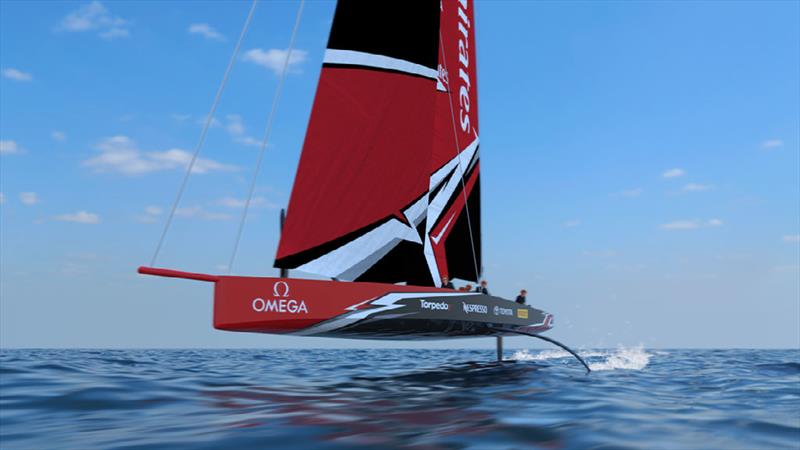
In sailing, there's no moment like the debut of a new America's Cup rule
by Peter Harken, Harken Chairman 4 Sep 2019 10:00 BST

The 36th America's Cup class boat concept of the AC75 © Virtual Eye
It's the week before Labor Day as I type this. And something that happens only rarely in our sport is about to take place. The first boats designed to a new America's Cup rule are about to be launched and take their first sails. There is no time quite like this in our sport. Since March of 2018 when version one of the AC75 Class Rule came out, the best minds in boat design, boat building, rigging and sail/soft wing design, have been creating the first America's Cup (and the World's first) 75' foiling monohulls. Before we go on, let's pause to reflect on that.
75'. Foiling. Monohull. Wow.
At Harken, we've been involved in the America's Cup since 1977. The boats then were 12 Meters...a class of boat that had existed since the turn of that century. They were great boats for the Cup, but there had been lots already built. And until the winged keel appeared, we thought we knew all about them. Teams and designers focused on ever-smaller areas in the rule to find any small advantage.
Next came the first AC75 rule, and it was a moment very much like right now. The first boats that were launched looked quite different from one another. Some explored the max width of the rule. Some went very narrow. The rigs were different, as were the sail shapes. I remember a boat from New Zealand was shorter than the others and much lighter. The best and brightest in the sport looked at the rule and went in different directions. In time, over 100 of those AC75s were built. Cup cycle to Cup cycle, what was fast became better and better understood and the designs coalesced toward the very narrow type form that we saw at the end.
On to the 35th Cup Match held in Bermuda in 2017. Parts of the boats and sails were supplied equipment as mandated by the rule. Said another way, those parts were identical. So at first viewing, except for the New Zealanders who were seen biking where others were grinding, the boats looked pretty similar. As it turned out, they weren't that similar around the racecourse, but what accounted for the performance difference was in the execution of the flight control.
That brings us back to today. In the next few weeks, the first of the new AC75s will splash and it will be striking. Locked in, in breeze, their tenders and coach boats may struggle to keep up. How well these boats will be managed, even by the world's best sailors, is still an open question. We've seen how seriously the teams are taking the possibility of capsize in the attention they're paying to supplemental oxygen supplies each sailor carries. We've seen them in the pools training for every possibility.
At Harken, we've been building, testing and delivering equipment for these boats for months. As the Cup goes, much of what we've built so far will be out-designed and rebuilt several times before the next Match in Spring of 2021. For right now, there's really nothing to do but wait for the first launches. Wait for the first time the soft wings go up. Wait for the first time the hulls leave the water and the arms support these amazing creations. Right now, we can just be fans... fantastic!
See the 3D Model of the AC75 here.
Read the full September Issue of the Harken At The Front Newsletter here.